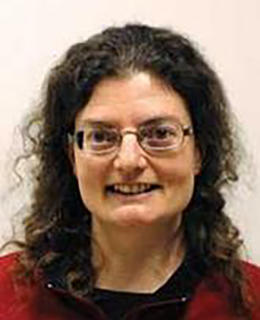
Marie Fraser
Positions
Professor
Contact information
Background
Educational Background
B.Sc. Chemistry, Queen's University, 1983
Ph.D. Chemistry, Queen's University, 1987
Research
Areas of Research
Participation in university strategic initiatives
Projects
Catalyic Mechanism and Biological Roles of Succinyl-CoA Synthetase and Related Enzymes (funded by NSERC)
Biochemistry students are introduced to succinyl-CoA synthetase (SCS) as one of the enzymes of the citric acid cycle. In the citric acid cycle, SCS catalyzes the reaction that uses a molecule of succinyl-CoA and inorganic phosphate to phosphorylate ADP or GDP; and releases succinate and CoA. The enzyme is interesting because
- it participates in the reaction through the phosphorylation of a histidine residue,
- it has two different subunits, named alpha and beta, and some forms of SCS are alpha,beta-dimers while others are alpha2beta2-tetramers,
- some forms of SCS can use either ADP or GDP while other forms can use only one of the two,
- the enzyme must bind three substrates and releases three products.
The goal of our work is to understand how SCS catalyzes the reaction. As we learn about SCS, we gain an understanding of other multi-subunit proteins, of other enzymes that catalyze reactions of nucleotides, and of other proteins that are phosphorylated on histidine residues.
We solved the structure of E. coli SCS using X-ray crystallography. In this structure, the active site histidine residue is phosphorylated. The structure showed that the alpha-subunit binds CoA with the reactive group of CoA located near the phosphorylated histidine residue. The phosphorylated histidine residue is stabilized by interactions with both the alpha- and the beta-subunits. We later discovered that the nucleotide, ADP, binds in another domain of the beta-subunit, ~35 Å away from the active site histidine residue. We hypothesized that the loop that includes this histidine residue flips to position the histidine residue near the nucleotide-binding site and were able to crystallize the loop in this second conformation. We have also been able to determine the binding site for succinate, prove that succinyl-phosphate is an intermediate in the reaction, and learn how different forms of SCS discriminate between nucleotides. It is suspected that the different forms of SCS are needed for the enzyme to perform its various functions. In addition to its role in the citric acid cycle, SCS produces succinyl-CoA for ketone body metabolism and plays a role in the synthesis of the heme groups in hemoglobin of red blood cells. These are roles we are currently investigating.
Related enzymes include ATP-citrate lyase, which catalyzes the conversion of citrate and CoA into acetyl-CoA and oxaloacetate, coupled with the hydrolysis of ATP. ATP-citrate lyase is the cytoplasmic enzyme linking energy metabolism from carbohydrates to the production of fatty acids. Since this link is important in many cancer cells, the enzyme is a target for drug design.
Awards
- AHFMR Medical Scholar- salary award, 2007
- NSERC (1999-02) Univ Faculty Award, one of the top three candidates in the Ist year of the program , 2002
Publications
- Structural determination of ATP citrate lyase. Vinh H Nguyen; Marie Elizabeth Fraser. (2018)
- Structural studies of human ATP-specific succinyl-CoA synthetase. Marie Elizabeth Fraser; Ji Huang. (2018)
- "Structural studies of human ATP-specific succinyl-CoA synthetase". (2016)
- "Identification of the inhibition mechanism of hydroxycitrate on human ATP citrate lyase". (2016)
- "Crystallization of carboxy-terminal ATP-citrate lyase". (2016)
- "Identification of the inhibition mechanism of hydroxycitrate on human ATP citrate lyase". (2016)
- In vivo carrier-driven crystallization for novel structural determinations. Marie Elizabeth Fraser; Kyle H McDade. (2018)
Are you the profile owner?
Login to edit.
